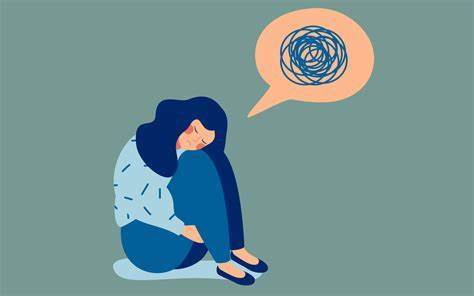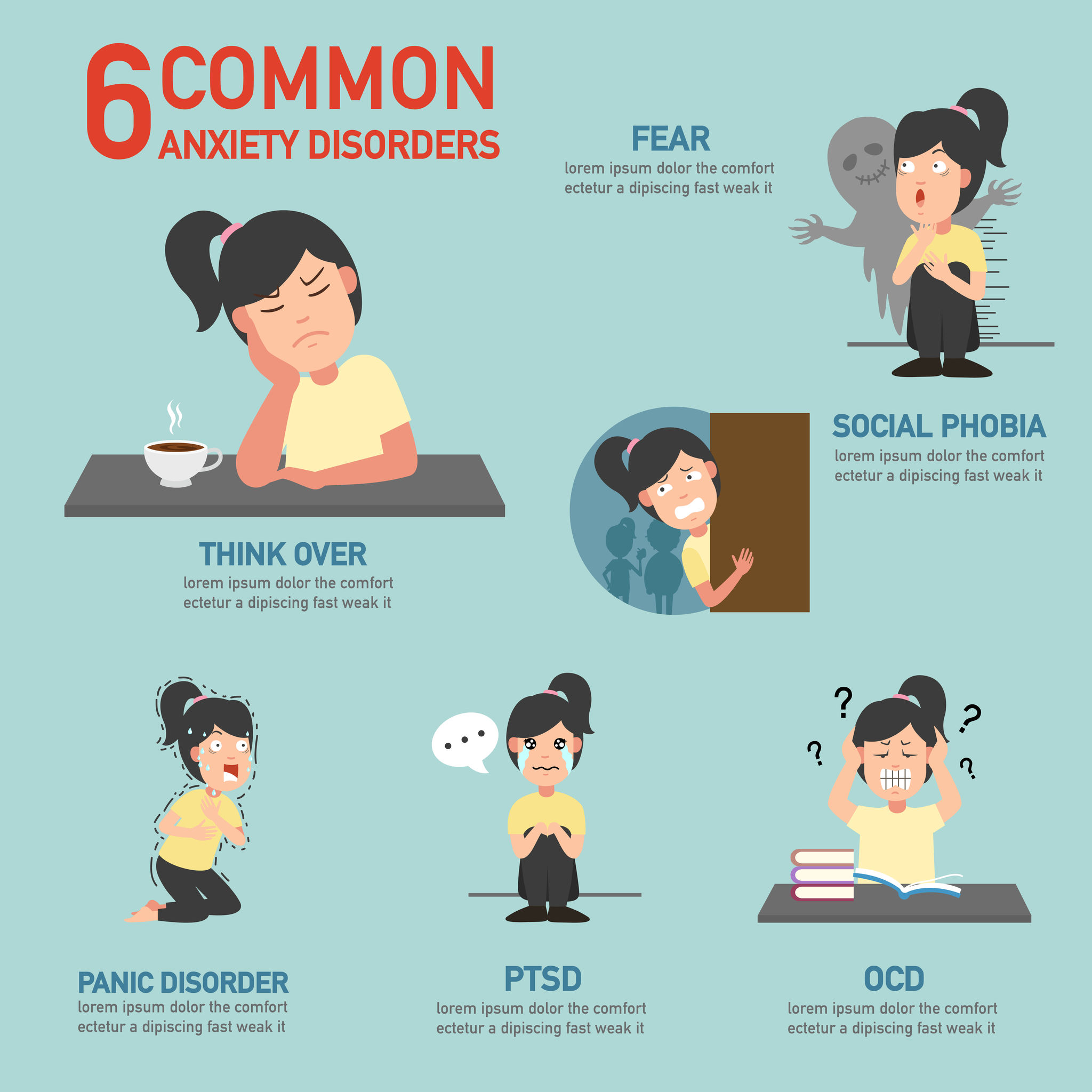Counselling for anxiety disorder available online and face-to-face near you
Counselling for anxiety disorder available online and face-to-face near you
Blog Article
Checking Out Different Methods in Therapy for Anxiousness Condition for Long-term Adjustment
When taking on anxiety disorders, it's vital to explore a variety of counseling approaches. Each method offers unique insights and tools to help you manage your symptoms successfully. You may find that combining techniques can yield the best outcomes. Nonetheless, recognizing the subtleties of these methods is essential to promoting long lasting change. Suppose the best mix could release a new degree of emotional well-being for you?
Understanding Anxiousness Conditions: A Brief Review
Stress and anxiety disorders, which influence countless people worldwide, can considerably impact every day life. You might experience frustrating feelings of anxiety or fret that seem uncontrollable. These sensations can result in physical symptoms like an auto racing heart, sweating, and even dizziness. Typical kinds of anxiousness disorders include generalised anxiousness problem, panic attack, and social stress and anxiety disorder. Each has unique indicators, however they all share a tendency to interrupt your routine and relationships.Understanding the source of your anxiousness is crucial. It could come from genes, brain chemistry, or life experiences. Acknowledging your triggers can aid you manage your actions better. It is very important to keep in mind that you're not the only one in this struggle. Lots of people deal with comparable challenges, and looking for help is a solid action toward sensation better. By discovering anxiety conditions, you're already on the course to understanding and handling your problem better.
Cognitive-Behavioral Therapy: Testing Adverse Idea Patterns
In Cognitive-Behavioral Treatment, you'll start by determining the adverse thought activates that add to your anxiousness. You'll work on replacing them with more positive alternatives when you recognize these ideas. With each other, you'll develop efficient coping approaches to help manage your anxiousness in day-to-day situations.
Identifying Negative Thought Triggers

Recognizing the specific triggers behind your negative thoughts can be vital in handling anxiousness when you run into minutes of distress. Beginning by taking notice of scenarios that prompt sensations of fear or concern. Is it a congested space, an upcoming due date, or a discussion with particular people? Write these instances in a journal. This will assist you identify patterns in your thinking. Notice physical experiences that accompany your unfavorable thoughts, like a racing heart or rigidity in your upper body. By determining these triggers, you get understanding into what's sustaining your stress and anxiety. Recognizing these links is the very first step in challenging those thoughts and ultimately restoring control over your psychological actions.
Replacing Ideas With Positives
Testing unfavorable idea patterns is an essential action in changing your state of mind and reducing anxiousness. You may typically locate yourself caught in cycles of insecurity or catastrophic thinking. Rather of letting these ideas determine your feelings, practice replacing them with positive affirmations or practical alternatives. As an example, when you think, "I can not handle this," move it to, "I can take care of challenges one step at a time." This straightforward change can greatly influence your emotion. Routinely determining and responding to these negative thoughts helps produce a healthier internal discussion. Remember, it takes time and effort, but consistently practicing this method can result in long lasting change, encouraging you to deal with stress and anxiety with renewed confidence and durability.
Building Coping Techniques With Each Other
Changing adverse ideas is only the start of managing stress and anxiety properly. To produce enduring modification, you need to construct coping approaches that encourage you. Cognitive-Behavioral Therapy (CBT) helps you determine and test those unhelpful thought patterns. With each other, you and your therapist can check out how these ideas effect your feelings and behaviors.Start by creating functional methods, like journaling or mindfulness exercises, that enable you to confront anxiousness head-on. When you encounter your fears progressively, you'll discover to react in different ways.

Mindfulness and Acceptance-Based Approaches: Cultivating Present-Moment Recognition
As you navigate the complexities of anxiousness, incorporating mindfulness and acceptance-based techniques can considerably improve your ability to cultivate present-moment understanding. By concentrating on the present moment, you'll locate that you can observe your thoughts and feelings without judgment (Counseling services for anxiety). This method aids you acknowledge your anxiety without really feeling bewildered by it.Engaging in mindfulness workouts, such as deep breathing, body scans, or guided meditations, enables you to ground on your own in your current experience. Acceptance-based techniques urge you to welcome your emotions instead of combat against them. When you approve your sensations, they lose their power over you.Incorporating these practices into your everyday routine can change just how you react to anxiety. You'll establish strength and discover to browse demanding scenarios with greater ease. Ultimately, cultivating present-moment awareness lays the foundation for lasting change, encouraging you to lead an extra meeting life
Direct Exposure Treatment: Challenging Anxieties Progressively
Exposure treatment aids you challenge your anxieties in a steady means, making it much less frustrating. You'll discover techniques to face anxiety-provoking situations action by action, while likewise developing coping techniques to manage your responses. This strategy equips you to take control and minimize anxiety over time.
Gradual Direct Exposure Methods

When encountering anxiousness, slowly challenging your worries can be a powerful method to reclaim control. This method, referred to as gradual exposure, entails slowly revealing yourself to the scenarios or objects that activate your anxiousness. Start with much less intimidating situations and progressively work your method approximately more difficult ones. For circumstances, if you're afraid of public speaking, you could begin by talking in front of a mirror, then proceed to sharing thoughts with a good friend, and eventually deal with a tiny team. Each action helps desensitize you to the worry, constructing your self-confidence over time. Remember, it's vital to pace yourself and celebrate small success as you move with this procedure, enhancing your capacity to take care of anxiety efficiently.
Structure Coping Methods
Structure reliable coping approaches is essential for managing anxiety, especially as you face your concerns slowly - Counseling services for anxiety. One effective technique is direct exposure treatment, where you begin by facing your concerns in a regulated way. Start with much less frightening scenarios and gradually function your means as much as even more challenging scenarios. This gradual direct exposure aids desensitize you to stress and anxiety sets off, making them less overwhelming.Incorporate relaxation strategies, such as deep breathing or mindfulness, to relax your mind throughout exposure. Track your progress, commemorating tiny success along the means to increase your self-confidence. Bear in mind, it's all right to take your time; the objective isn't perfection but constant enhancement. By developing these strategies, you'll encourage on your own to navigate anxiety and welcome life much more fully
Psychodynamic Treatment: Discovering Source of Stress And Anxiety
Psychodynamic therapy discovers the subconscious mind, exposing the origin of your anxiety. By analyzing your ideas, feelings, and previous experiences, this method aids you discover underlying conflicts and unsettled issues that might add to your existing stress and anxiety. You'll function with a specialist to investigate childhood years experiences, relationships, and psychological patterns that shape your feedbacks today.As you acquire understanding into these much deeper layers of your mind, you'll begin to acknowledge just how past occasions influence your existing behavior. This understanding can bring about this post catharsis, enabling you to refine emotions you could have suppressed.Through the healing connection, you can also recognize protection devices that may have created over time, offering a clearer course to transform. Ultimately, psychodynamic treatment outfits you with the tools to address your anxiousness at its core, advertising long lasting makeover in your emotional wellness.
All Natural and integrative Techniques: Combining Techniques for Greater Effectiveness
Incorporating various therapeutic techniques can improve your journey towards Source taking care of anxiousness better. By incorporating components from cognitive-behavioral therapy, mindfulness practices, and all natural approaches, you can develop a tailored approach that resolves your unique needs. You might use cognitive-behavioral techniques to test adverse idea patterns while integrating mindfulness exercises to ground yourself in the present moment.Additionally, exploring all natural techniques such as yoga exercise or reflection can promote leisure and minimize stress and anxiety signs. This blend enables you to develop greater self-awareness and resilience.Experimenting with these varied techniques can help you discover what reverberates most with you. Keep in mind, it's regarding finding a harmony that functions, instead than staying with a single approach. This integrative approach not just uses instant relief yet likewise fosters long-term abilities for managing anxiety, encouraging you to reclaim control over your life.
The Duty of Support Systems: Structure Resilience Via Connection
While it might appear that managing stress and anxiety is a solitary trip, having a strong support system can play an important role in your strength. Surrounding on your own with empathetic friends, household, or support groups develops a risk-free room where you can freely share your sensations and experiences. You advise on your own that you're not alone in this struggle.These partnerships supply motivation and can supply practical coping methods that have actually worked for others when you link with others. It's additionally a chance to acquire viewpoint; pals can aid you see situations in different ways, reducing sensations of isolation.Moreover, psychological support cultivates a sense of belonging, which can considerably reduce anxiousness signs. By leaning on your support system, you can construct durability and take on challenges more effectively. Keep in mind, connecting for aid suggests strength, and it can make all the difference in your journey toward managing stress and anxiety.
Often Asked Inquiries
What Are the Usual Symptoms of Anxiousness Disorders?
You might experience restlessness, fatigue, difficulty concentrating, irritability, muscle tension, and rest disturbances. Physical symptoms can include rapid heartbeat, sweating, and shivering. Identifying these indicators early can aid you look for proper assistance and treatment.
How Much Time Does Therapy Usually Last for Stress And Anxiety Conditions?
Therapy for anxiety problems commonly lasts anywhere from a couple of weeks to numerous months. It actually relies on your specific demands, progression, and the methods your specialist uses to help you manage your anxiousness properly.
Can Medicine Be Utilized Together With Therapy for Anxiousness?
Yes, medication can certainly be used along with therapy for anxiety. Combining both approaches often boosts treatment effectiveness, assisting you manage symptoms while checking out underlying issues via therapy (Counseling services for anxiety). Always consult your doctor for individualized guidance
Exist Self-Help Methods for Taking Care Of Stress And Anxiety?
Yes, there are several self-help approaches for taking care of anxiousness. You can practice mindfulness, take part in routine workout, maintain a well balanced diet, develop a regular, and utilize deep breathing strategies to help in reducing stress and anxiety signs and symptoms effectively.
Just how Do I Know if I Required Professional Assistance for Anxiety?

Report this page